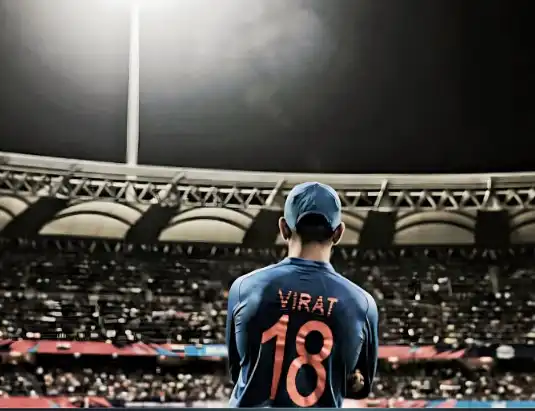.jpg?type=hq) SG and Kookaburra balls (X)
SG and Kookaburra balls (X)
In Test cricket, few factors influence the game as much as the type of ball in play. For decades, two balls—Sanspareils Greenlands (SG) and Kookaburra—have played a massive role in shaping the outcome of matches, especially when they’re played on contrasting surfaces like those in the subcontinent and other parts of the cricketing globe.
The recent series opener between India and Bangladesh in Chennai, in which the visitors lost by 280 runs, once again brought the SG ball into the limelight. Bangladesh skipper Najmul Hossain Shanto brushed off its impact and claimed that there was no issue in adapting to playing with the SG ball in India compared to playing with the Kookaburra ball in Pakistan.
However, there’s no denying that each ball carries its own unique characteristics. Let’s take a look into the differences between these two balls and how they affect the game.
Stitches That Leave a Mark: SG vs Kookaburra
The SG ball is known for its hand-stitched seam, a feature that quite literally stands out. The thicker, more pronounced stitches make it easier for bowlers to grip the ball, and offer better control, especially in conditions that favour reverse swing.
As Litton Das pointed out ahead of the series, “The SG ball bites harder as it ages,” meaning it offers more assistance to bowlers even after the ball loses its shine.
In contrast, the Kookaburra ball, used predominantly in countries like Australia, New Zealand, and South Africa, is machine-stitched. The less prominent seam tends to flatten out over time, reducing the lateral movement bowlers can extract as the game progresses.
Ageing Gracefully or Fading Away?
One of the most debated differences between the SG and Kookaburra balls is how they behave as they age. Once it loses its lacquer and hardness, the Kookaburra ball becomes more batter-friendly. The softened seam is more accessible to negotiate, and batters often find it more manageable as the ball stops doing as much off the surface. In this case, time is on the batter’s side.
The SG ball, however, is a different beast altogether. It ages like fine wine—perhaps getting more challenging with each passing over. The harder stitching and seam allow for more reverse swing, especially on abrasive Indian pitches.
In Swinging and Out Swinging: Movement Matters
Regarding movement, the SG ball creates havoc with its ability to swing, seam, and reverse swing. Its ability to retain hardness for longer periods means fast bowlers can exploit the reverse swing well into the second half of the innings. The extra pronounced seam helps spinners grip the surface more and offers sharp turn and bounce—qualities that turn Indian spinners into lethal weapons.
In comparison, the Kookaburra ball’s charm lies in its earlier swing, mainly when it is new. The seam doesn’t grip the surface as much once the ball softens, which makes it harder for spinners to extract sharp turns or bounce later in the game. The Kookaburra’s bite fades with age, leaving bowlers scrambling for options as the innings wears on.
SG Ball: Tailor-Made for Indian Conditions
In India, where slow, low pitches dominate, the SG ball is king. Its durability and seam suit the subcontinental conditions perfectly, which allows bowlers to maintain pressure for longer periods. SG balls weigh approximately 156–160 grams.
While Bangladesh captain Shanto claimed that the ball didn’t play a major role in their defeat, the SG ball’s unique characteristics may have contributed more than he acknowledged.
Kookaburra Ball: A Different Ball Game
Used in countries like Australia, New Zealand, Pakistan, and South Africa, among others, the Kookaburra ball presents a different challenge altogether. Its smoother surface and machine-stitched seam make it easier for batters to handle after the initial swing wears off. Produced in Australia, Kookaburra balls range between 142 and 156 grams.
On faster, bouncier pitches, the Kookaburra is more effective in the early stages, where seamers can use its initial movement to pick up wickets. But once the seam flattens out, it becomes more of a batting paradise, especially in flat conditions.
The Final Word: A Matter of Survival
At the end of the day, the choice between SG and Kookaburra comes down to a matter of survival. In Indian conditions, where bowlers often turn the screws on batters with unrelenting pressure, the SG ball reigns supreme.
On the other hand, the Kookaburra, while still effective, demands more from bowlers in terms of discipline and consistency, especially once its initial swing disappears.
As the saying goes, “when in Rome, do as the Romans do,” and in Indian cricket, you’d better know how to handle the SG ball if you want to survive.

.jpg)

.jpg?type=mq)
.jpg?type=mq)
.jpg?type=mq)
